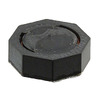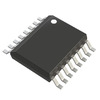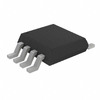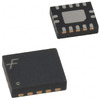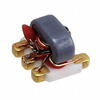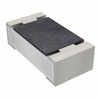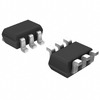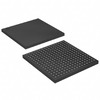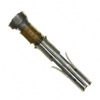A Comprehensive Guide to the Arduino Uno R4 Minima
The Arduino Uno R4 Minima is a next-generation upgrade to the beloved Arduino Uno series, combining the familiar form factor with enhanced performance and expanded capabilities. At its core, this new model replaces the traditional 8-bit AVR microcontroller with a powerful 32-bit Arm Cortex-M4, bringing more memory and faster processing to tackle complex projects. This boost in capability enables you to explore more intricate applications, especially in areas like IoT, robotics, and data-intensive projects, without sacrificing compatibility with the wide range of Arduino shields and accessories. The Renesas R7FA4M1AB3CFM#AA0 microcontroller at the center of this board offers robust features, making the Uno R4 Minima a versatile tool for you. From educational to professional environments, this upgrade represents a seamless bridge between classic simplicity and modern functionality, unlocking new possibilities in embedded electronics.Catalog
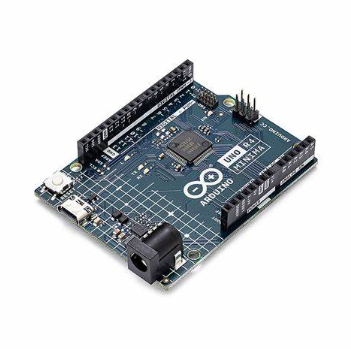
Overview of Arduino Uno R4 Minima
Operating at a 5V logic level, the Arduino Uno R4 Minima effortlessly syncs with a plethora of existing Arduino shields, preserving harmony with previous designs. This capability offers an effortless transition for those eager to enhance their creations without undergoing remarkable hardware modifications. The ease of integration invigorates both new and continued projects, fostering innovation and streamlining developmental progression.
The board's power can be harnessed through a USB-C port, barrel jack, and VIN pin. Such diverse power options allow the latitude to select what best serves their project ambitions. The inclusion of a modern USB-C port echoes a wider shift in technology, offering better durability and ease of use compared to antecedent connectors. Furthermore, the onboard buck converter expertly navigates higher input voltages to stabilize a 5V output, optimizing energy efficiency and device reliability.
The R7FA4M1AB3CFM#AA0 microcontroller invites you to explore its advanced functions, featuring a 12-bit Analog-to-Digital Converter (ADC) and touch sensing. Supported by numerous serial interfaces, it paves the way for intricate and engaging projects. These elements craft a canvas for personalization and forward-thinking designs. It caters to a spectrum of endeavors, from rudimentary tasks to intricate challenges, showcasing the adaptability of this microcontroller landscape.
|
Specification |
Value |
|
Microcontroller Family |
Renesas RA4M1 |
|
Core |
ARM Cortex-M4 |
|
Clock Speed |
48MHz |
|
Flash Memory |
256KB |
|
RAM |
32KB |
|
Number of I/O Pins |
81 |
|
Operating Voltage |
1.6V - 5.5V |
|
ADC Channels |
18 x 14-bit |
|
DAC Channels |
1 x 8-bit, 2 x 12-bit |
|
Communication Interfaces |
CANbus, I2C, SPI, UART, USB |
|
Timers/PWM |
Yes |
|
Package |
64-pin LQFP |
|
Operating Temperature |
-40°C to 105°C |
|
Dimensions |
10mm x 10mm |
|
Pin Count |
64 |
Pin Layout
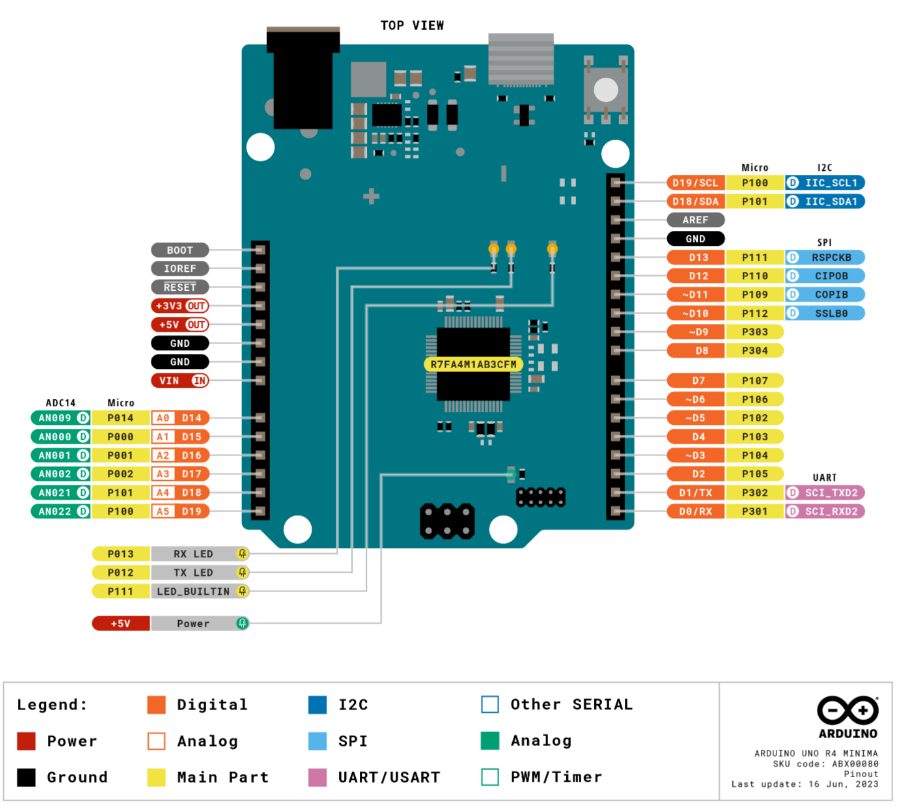
Features of Arduino Uno R4 Minima
|
Feature |
Specification |
|
Microcontroller |
Renesas R7FA4M1AB3CFM#AA0 (Arm Cortex-M4) |
|
Operating Voltage |
5V |
|
Digital I/O Pins |
14 |
|
Analog Input Pins |
6 |
|
Flash Memory |
256 KB |
|
SRAM |
32 KB |
|
USB Connector |
USB-C |
|
Power Connector |
Barrel jack |
|
On-board Converter |
Buck converter |
Applications of Arduino Uno R4 Minima
Programming Projects
With the Arduino Uno R4 Minima, you can encounter a gateway to discovery, aided by an accessible interface and vibrant community. As they immerse in learning the essence of coding and electronics, the board offers a hands-on playground for crafting simple circuits and automating ultimate tasks. Typically, you can embark on projects like crafting LED blinking patterns or utilizing temperature sensors, which cultivate basic skills influential for tackling complex designs. Such ventures create meaningful learning experiences, allowing experimentation with digital and analog outputs that bridge notional knowledge and practical application.
Educational and STEM Engagement
In the educational world, this board excels by rendering complex theories more digestible, thereby becoming a favored tool. Focusing on STEM, you can employ the Arduino Uno R4 Minima to exemplify the intertwining dance between software and hardware. Classroom ventures might include constructing rudimentary weather stations or basic robots coded by students, nurturing a profound grasp of sensor and actuator interactions. Introducing Arduino into the curriculum not only enlivens studies but also provokes serious reasoning, captivating you similarly to unlocking the boundless potential of innovation and imagination.
IoT System Development
Throughout the invention of Internet of Things (IoT) systems, the Arduino Uno R4 Minima emerges as an adaptable, economical bridge connecting tangible devices to digital landscapes. You can leverage the board in prototyping smart home gadgets, wearable tech, and other interconnected devices. Through integrating Bluetooth or WiFi modules, you can manifest systems for real-time environmental control and monitoring. For example, creating a smart irrigation system responsive to actual weather data showcases the board's aptitude in bolstering efficiency and sustainability, highlighting the harmony of technology with daily existence and inspiring innovation across personal and industrial spectra.
Robotic Servo Control
Utilizing the Arduino Uno R4 Minima transforms the manipulation of robotic servos into an intuitive endeavor for robotics aficionados. It offers a robust basis for developing robotic arms, self-guided vehicles, and tasks demanding precise movement coordination. Programming the board to navigate servo motors unveils insights into motion dynamics and feedback systems key to automation, similar to the precision found in industrial robotics. Through active engagement in servo control projects, you can gain a rewarding opportunity to transform abstract programming ideas into actual outcomes.
Home Automation
For home automation, the Arduino Uno R4 Minima serves as the ultimate element, enabling seamless device interactions. You can harness its capabilities to create automation solutions for lighting, climate regulation, and security enhancement within households. By pairing microcontrollers with sensors and actuators, one contemplates the harmonious integration of comfort and technology, uniting isolated devices into a seamless smart ecosystem. These implementations not only escalate convenience but also spotlight the intricate fusion of established and advancing technologies to enrich everyday living.
Technical Specifications of Arduino Uno R4 Minima
|
Category |
Specification |
|
Board |
Name: Arduino® UNO
R4 Minima |
|
SKU: ABX00080 |
|
|
Microcontroller |
Renesas RA4M1 (Arm® Cortex®-M4) |
|
USB |
USB-C® (Programming Port) |
|
Pins |
Digital I/O Pins: 14 |
|
Analog input pins: 6 |
|
|
DAC: 1 |
|
|
PWM pins: 6 |
|
|
Communication Power |
UART: Yes, 1x |
|
I2C: Yes, 1x |
|
|
SPI: Yes, 1x |
|
|
CAN: Yes, 1 CAN Bus |
|
|
Circuit operating voltage: 5 V |
|
|
Input voltage (VIN):
6-24 V |
|
|
DC Current per I/O Pin:
8 mA |
|
|
Clock speed |
Main core: 48 MHz |
|
Memory |
RA4M1: 256 kB Flash,
32 kB RAM |
|
Dimensions |
Width: 68.85 mm |
|
Length: 53.34 mm |
Alternative Arduino Boards
Within the vibrant world of Arduino, alternatives to the traditional Arduino Uno abound. This includes boards like the Arduino Nano, Micro, and Pro Mini. Each of these variants comes with unique attributes, tailored to meet a range of project requirements and limitations. Grasping the specifics of these boards can deeply influence one’s choice in selecting the most fitting tool for a particular project.
• Arduino Nano: This compact, breadboard-compatible marvel excels in embedded applications where economizing space touches the heart of design philosophy. The Nano maintains the robust performance seen in the Uno, offering a more space-conscious solution without sacrificing capability.
• Arduino Micro: With additional pins and USB connectivity, the Micro embraces versatility. Mostly during the prototyping phase, these features prove invaluable, offering expanded I/O options that can enhance efficiency in developmental tasks.
• Arduino Pro Mini: Tailored for wearables and portable applications, the Pro Mini strips away the USB port to create an even more diminutive form. This design choice necessitates an external FTDI cable for programming, a tradeoff often embraced by those pursuing ultra-compact devices.
• Spark Fun Red Board Qwiic: The Spark Fun Red Board Qwiic captures attention by embedding the Qwiic Connect System, which simplifies I2C connections and enriches the prototyping process with an extensive array of components. By alleviating wiring complexity, it fosters the creation of reliable, visually appealing projects, an enticing factor for those who cherish both elegance and functionality in their technological endeavors.
• Teensy LC: Offering sophisticated features like a 32-bit ARM processor, the Teensy LC presents a compelling choice for projects where enhanced processing power or meticulous hardware oversight is desired. This board often paves the way for more efficient designs. Its seamless compatibility with the Arduino IDE allows you to utilize its advanced functionalities without encountering prohibitive learning challenges.
Distinctions Between Arduino Uno R4 Minima and Nano
|
Feature |
Arduino Uno R4 Minima |
Arduino Nano |
|
Microcontroller |
Renesas RA4M1 (Arm® Cortex®-M4) |
ATmega328 |
|
Clock Speed |
Main Core: 48 MHz / ESP32-S3: Up to 240 MHz |
16 MHz |
|
Flash Memory |
RA4M1: 256 kB / ESP32-S3: 384 kB |
32 KB |
|
SRAM |
RA4M1: 32 kB / ESP32-S3: 512 kB |
2 KB |
|
Operating Voltage |
5V (ESP32-S3 is 3.3V) |
5V |
|
Digital I/O Pins |
14 |
14 (of which 6 provide PWM Output) |
|
Analog Input Pins |
A0 – A5 |
8 (A0 – A7) |
|
Analog Output Pins |
- |
- |
|
PWM Pins |
D3, D5, D6, D9, D10, D11 |
6 (D3, D5, D6, D9, D10, D11) |
|
Connectivity |
Wi-Fi and Bluetooth capabilities via ESP32-S3 from
Espressif |
- |
|
Dimensions (Width x Length) |
68.85 x 53.34 mm |
18 x 45 mm |
Building an Elevated Line-Following Robot with Arduino Uno R4 Minima
Embarking on the creation of a line-following robot with the Arduino Uno R4 Minima offers an engrossing entry point into robotics. This task involves digging into sensor integration dynamics, mastering motor control distinctions, and exploring autonomous navigation strategies.
Components and Functionality
• Arduino Uno R4 Minima: This microcontroller acts as the cognitive center of the robot. It deftly processes inputs from sensors and dispatches outputs to motors, enabling the robot to glide with purpose. With its open-source nature, it is programmable to perform sophisticated algorithms active for advanced navigational duties, enriching the process with both strategy and ingenuity.
• Motor Driver (L298N): The L298N motor driver orchestrates the robot's movements with finesse, governing the precision control of DC motors. It translates the microcontroller's electronic language into the fluid actions of acceleration, deceleration, and turns. The harmony of these movements is of utmost significance as the robot keeps to a predetermined trajectory.
• IR Sensors: Acting as the robot's perceptive aides, these sensors are strategically positioned to consistently relay actual positional feedback relative to the track. This uninterrupted data transmission forms the backbone of trajectory adjustments, ensuring consistent track adherence, even amid shifting surface conditions.
Crafting the Robot’s Architecture
• Assembly and Connections: Constructing the robot involves a strong orchestration of connections linking the microcontroller, sensors, and motor driver. Each link plays a key role in the effective communication of data. The cyclical routine of testing and troubleshooting fosters a comprehensive grasp of electronic circuitry interrelations and practical problem-solving acumen.
• Calibration and Programming: This stage is where imagination converges with precision. Crafting exacting code allows for the interpretation of sensor readings and corresponding movement adjustments. Careful sensor calibration accommodates varying lighting and surface conditions, maintaining operational integrity across diverse environments.
About us
ALLELCO LIMITED
Read more
Quick inquiry
Please send an inquiry, we will respond immediately.
Frequently Asked Questions [FAQ]
1. What Supply Voltage Fits the Uno R4 Minima?
The Uno R4 Minima comfortably operates within an input voltage bracket of 7-12V. Yet, courtesy of its onboard voltage regulator, it can smartly manage a range stretching from 6 to 24 V. This capability shines in assorted development and testing environments where voltage levels might fluctuate. Ensuring a steady power feed enhances the hardware's consistent operation and serves the durability of its components.
2. What Connection Interfaces Are Provided?
The board offers a range of interfaces like I2C, SPI, UART, GPIO pins, and ADC. Such connectivity options cater to a broad spectrum of interfacing requirements, enabling seamless integration with various peripherals and sensors. Crafting a project with these interfaces in mind allows for the development of intricate systems, enriching your interaction and optimizing data acquisition processes.
3. Is Wireless Communication an Option?
Though the Uno R4 Minima lacks innate WiFi or Bluetooth features, it supports upgrades through external modules. This modular setup fosters creativity by letting you select wireless units that precisely match their project specifications. Herein lies the board's expansive potential—its modular nature encourages custom wireless solutions, inspiring you.
4. What is the Method for Computer Connectivity?
With the introduction of a USB-C port on the Uno R4 Minima, there's a noticeable shift from the traditional USB-B connections. This evolution aligns with modern trends, offering enhanced power delivery and streamlined data transmission. Adopting a USB-C connection is straightforward and harmonizes with today's computer hardware advancements, supporting a more streamlined and adaptable experience across various systems.
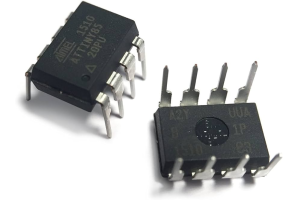
Everything You Need to Know About ATTINY85 Microcontroller
on November 14th
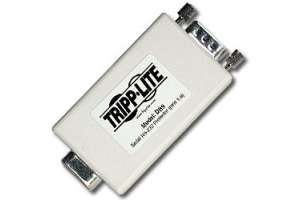
What Is a DB9 Connector and How Is It Used?
on November 14th
Popular Posts
-

What is GND in the circuit?
on January 1th 3209
-

RJ-45 Connector Guide: RJ-45 Connector Color Codes, Wiring Schemes, R-J45 Applications, RJ-45 Datasheets
on January 1th 2770
-

Understanding Power Supply Voltages in Electronics VCC, VDD, VEE, VSS, and GND
on November 18th 2489
-

Fiber Connector Types: SC Vs LC And LC Vs MTP
on January 1th 2227
-

Comparison Between DB9 and RS232
on January 1th 1848
-

What Is An LR44 Battery?
Electricity, that ubiquitous force, quietly permeates every aspect of our daily lives, from trivial gadgets to life-threatening medical equipment, it plays a silent role. However, truly grasping this energy, especially how to store and efficiently output it, is no easy task. It is against this background that this article will focus on a type of coin cell battery that may seem insignificant on the...on January 1th 1822
-

Understanding the Fundamentals:Inductance Resistance, andCapacitance
In the intricate dance of electrical engineering, a trio of fundamental elements takes center stage: inductance, resistance, and capacitance. Each bears unique traits that dictate the dynamic rhythms of electronic circuits. Here, we embark on a journey to decipher the complexities of these components, to uncover their distinct roles and practical uses within the vast electrical orchestra. Inductan...on January 1th 1776
-

CR2430 Battery Comprehensive Guide: Specifications, Applications and Comparison to CR2032 Batteries
What is CR2430 battery ?Benefits of CR2430 BatteriesNormCR2430 Battery ApplicationsCR2430 EquivalentCR2430 VS CR2032Battery CR2430 SizeWhat to look for when buying the CR2430 and equivalentsData Sheet PDFFrequently Asked Questions Batteries are the heart of small electronic devices. Among the many types available, coin cells play a crucial role, commonly found in calculators, remote controls, and ...on January 1th 1752
-

What Is RF and Why Do We Use It?
Radio Frequency (RF) technology is a key part of modern wireless communication, enabling data transmission over long distances without physical connections. This article delves into the basics of RF, explaining how electromagnetic radiation (EMR) makes RF communication possible. We will explore the principles of EMR, the creation and control of RF signals, and their wide-ranging uses. The article ...on January 1th 1741
-

Comprehensive guide to hFE in transistors
Transistors are crucial components in modern electronic devices, enabling signal amplification and control. This article delves into the knowledge surrounding hFE, including how to select a transistor's hFE value, how to find hFE, and the gain of different types of transistors. Through our exploration of hFE, we gain a deeper understanding of how transistors work and their role in electronic circu...on November 18th 1726








